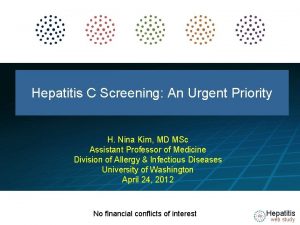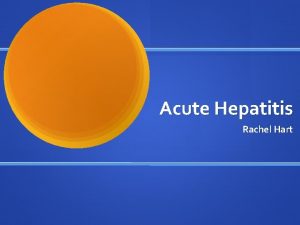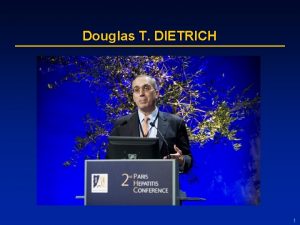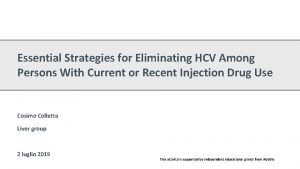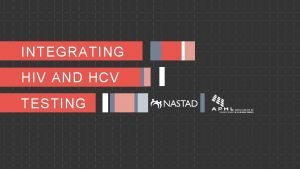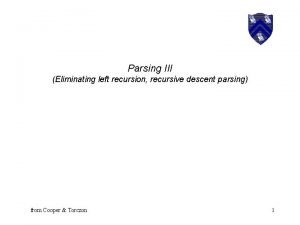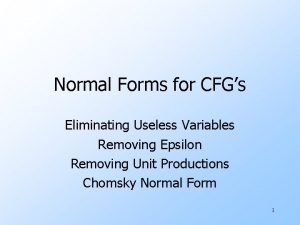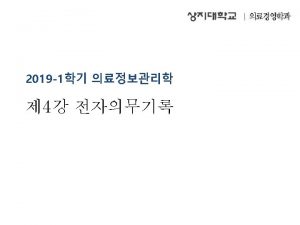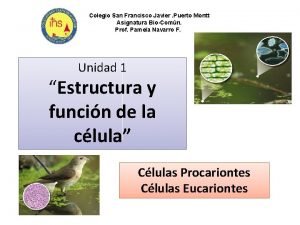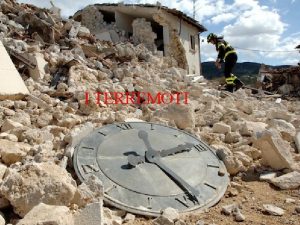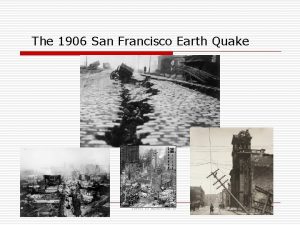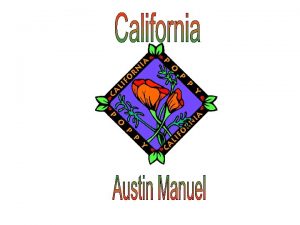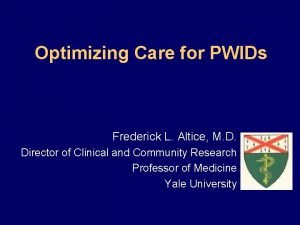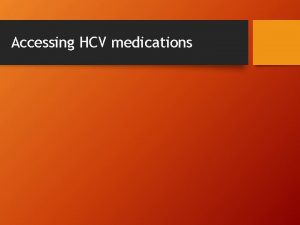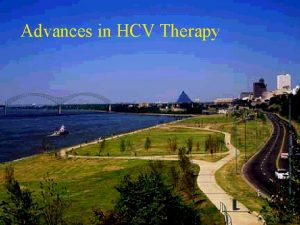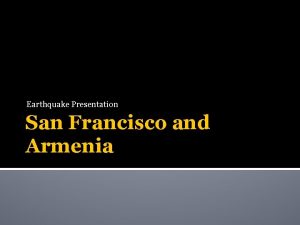Eliminating HCV in San Francisco Interventions for PWIDs

























- Slides: 25

Eliminating HCV in San Francisco Interventions for PWIDs KATIE BU RK, MPH VI RAL HEP A TI TIS CO ORDINATOR SAN FR A NCIS CO DEPARTM ENT OF PUBLIC HEAL TH 1

Presentation Outline 1. The case for HCV Elimination 2. The San Francisco Context 3. Situating drug users in the center of HCV elimination strategies 2

Hepatitis C Elimination: Why Now? 3

HCV Deaths Exceed Deaths from 60 Other Infectious Diseases Combined Other notifiable infectious conditions include HIV, tuberculosis, and hepatitis B Ly CID 2016 4

Global and U. S. Conversations about HCV Elimination - Why Now? • The clock is ticking as HCV-related mortality rises. • Almost all people with HCV can be cured with a short-course, well-tolerated, all-oral treatment. • All people with HCV can benefit from a cure. • HCV Cure as HCV Prevention: Scaled up HCV treatment paired with prevention of reinfection can lead to HCV elimination. 5

What will it take to eradicate HCV in the US? Base Case: - Risk based & Baby boomer screening - Treatment ramps up Ideal - Universal Screening - Treatment capacity unlimited Kabiri AIM 2014 Aug 5; 161(3): 170 -80

Treating PWID More effective when paired with Opiate substitution and needle exchange Martin Hepatology 2013, Martin 2013

Active Substance Users Critical target population for HCV elimination Is treatment of active users feasible? % of Patients with Positive Urine Drug Screen 70 Any drug use of 8 classes* 60 Any drug use of 7 classes (excl. cannabinoids) Cannabinoids 50 40 Benzodiazepines 30 Opiates 20 Cocaine 10 Amphetamines 0 Day 1 TW 2 TW 4 TW 6 TW 8 TW 10 TW 12 Time Point Despite substantial drug use during treatment, 96. 5% of patients missed ≤ 3 doses during 12 weeks Dore AASLD 2015, AIM 2016 REINFECTION • 6 reinfections through week 24 • 4. 6 reinfections/100 py

HCV in San Francisco 9

San Francisco by the numbers SF with > 16, 000 unduplicated past or present cases of HCV since data collection started 22, 500 active PWID (Chen 2015 AIDS & Behavior) ◦ NHBS data suggest 60% are living with HCV 16, 000 HIV+ individuals in SF end of 2015* ≈3 -4% prevalence of HCV among San Francisco Health Network population 6, 866 homeless individuals per One Night Count 2015 Highest rate of liver cancer in the US *HIV Count and Survey. Accessed at http: //sfgov. Epidemiology Annual Report 2014. The San Francisco Department of Public Health. Population Health Division, HIV Epidemiology Section. Available at https: //www. sfdph. org/dph/files/reports/Rpts. HIVAIDS/HIV-Epidemiology. Annual. Report-2014. pdf.

The Feasibility Issue: What makes HCV elimination possible in SF? • Compact size (7 x 7 miles) • HIV program infrastructure • Getting to Zero initiative • Drug user health service infrastructure • Committed medical providers willing to treat HCV • Medi-Cal (state Medicaid program) policy makes it possible to treat the majority of Medi-Cal beneficiaries • UCSF’s UFO Study (longitudinal study of HCV among young people who inject drugs) • CDC-funded hepatitis surveillance program 11

Big Picture Barriers to HCV Elimination in SF • Homelessness and displacement • High incidence of HCV among young PWIDs (≈21 -25%) • Racial disparities in HCV case reporting • “Donut hole” of Medi-Cal coverage • People living w/ HCV in Medi-Cal who aren’t eligible for HCV treatment • Limited federal investment in viral hepatitis surveillance, prevention, testing, and treatment interventions 12

13

Draft Vision, Mission, Values, and Strategies VISION End Hep C SF envisions a San Francisco where hepatitis C is no longer a public health threat. MISSION To support all San Franciscans living with and at risk for hepatitis C to maximize their health and wellness. We achieve this through prevention, education, testing, treatment, and linkage to reduce incidence, morbidity, and mortality related to hepatitis C. All people living with hepatitis C deserve access to a cure Everyone living with or at risk for hepatitis C should have equal access to prevention and care Draw on the wisdom of those most impacted by HCV Engage populations that have been characterized as “difficult to engage” Address health disparities 14

ENGAGING PWID S IN OUR HCV ELIMINATION WORK 15

Strategies: Representation of Impacted Communities End Hep C SF Steering Committee Katie Burk, MPH SFDPH Kelly Eagen, MD Tom Waddell Urban Health Mandana Khalili, MD Annie UCSF Luetkemeyer, MD UCSF Rena Fox, MD UCSF/VA Rachel Mc. Lean, MPH CDPH Theresa Hughes Health Care Disparities Alfredta Nesbitt Bayview Hunters Point Foundation Emalie Huriaux, MPH Project Inform Kyriell Noon Glide Foundation Isaac Jackson Urban Survivors Union Robin Roth SF Hep C Task Force Janetta Johnson Transgender Intersex Justice Project Norah Terrault, MD UCSF 16

Prevention Strategies: Drug User Health Engagement Early adoption of syringe access National model of overdose prevention programming Sobering center Outpatient buprenorphine induction clinic Robust methadone access 17

Prevention Strategies: Education Messaging for and by drug users 18

Prevention, Testing, Linkage Strategies: Agency Outreach Cole St. Clinic (queer BAART Clinic Treatment Access Program Scientific Working Group (DPH) Fox Plaza Shelters Larkin Street Youth Services Drug Court City Clinic Bayview Hunters Point Foundation (methadone program) HIV Community Planning Council (STD Clinic) youth clinic) (planned) (methadone program) (SRO) Westside Clinic (methadone program) 19

Testing and Linkage Strategies: Go where drug users are San Francisco AIDS Foundation Syringe Access Services (city-wide) Outcomes Homeless Youth Alliance 4/1/16 -9/30/16: ZSFG Ward 93/OTOP methadone program ü 961 tested, community based settings Glide Programs St. James Infirmary UFO/VIP studies Drug Users Union Project Homeless Connect SF County Jail SROs ü 22% Antibody prevalence ü 177 linked to care Martin de Porres Drop-in Center 20

Prevention Strategies: Treatment Access CA State Medi-Cal HCV Treatment Eligibility Guidelines • Evidence of Stage 2 or greater hepatic fibrosis/cirrhosis • Evidence of extra-hepatic manifestation of hepatitis C virus • Persons with hepatocellular carcinoma with a life expectancy of >12 months • Pre- and post-liver transplant, or other solid organ transplant • HIV-1 co-infection • Hepatitis B co-infection • Other coexistent liver disease Type 2 diabetes mellitus (insulin resistant) • Porphyria cutanea tarda • Debilitating fatigue • Men who have sex with men with high-risk sexual practices • Active injection drug users • Persons on long-term hemodialysis • Women of childbearing age who wish to get pregnant. • HCV-infected health care workers who perform exposure-prone procedures 21

Treatment Access Strategies: Bring HCV Treatment into Primary Care Program Development • Patient-centered • Feasible & safe • Efficient • Satisfying (to staff and patients alike) • Trainings • e. Referral • Technical assistance for individual clinics • Increases access for vulnerable populations SFHN and HR 360 HCV Treatment Outcomes (1/1/16 -10/31/16) ü 166 providers trained ü 35 providers used e. Referral ü 395 patients completed treatment ü 84 on treatment currently

Treatment Access Strategies: Take Treatment out of Primary What’s next? Care Get outside the 4 -wall clinic! • • Shelters Methadone programs (OTOP!) Street Medicine Syringe exchange Mental health clinics Supportive housing Residential treatment programs OTOP Outcomes ü 18 completed treatment since 7/1/15 ü 26 currently on treatment since 7/1/2016

Treatment Access Strategy: Reach populations hardest hit by HCV in SF Interventions: African. Americans ü Nurse for homeless and TG clinics Drug users Trans women Homeless ü Rapid initiation of treatment at residential drug treatment ü DOT at methadone programs in predominantly African. American neighborhood ü HCV testing integration in Trans*National study 24

For More Information: www. End. Hep. CSF. org Katie Burk, MPH Viral Hepatitis Coordinator SFDPH katie. burk@sfdph. org Thanks to: Annie Luetkemeyer Kelly Eagen Aaron Smith Shelley Facente End Hep C SF Steering Committee End Hep C SF Community Partners SFDPH 25
 Usf sacramento campus
Usf sacramento campus Hcv treatment
Hcv treatment Hcv symptoms female
Hcv symptoms female Hcv and lcv formula
Hcv and lcv formula Douglas t dietrich
Douglas t dietrich Hcv treatment
Hcv treatment Hiv test window period
Hiv test window period Involves eliminating columns in a table
Involves eliminating columns in a table Eliminating muddling mindset
Eliminating muddling mindset The left recursion produces
The left recursion produces Remove epsilon productions
Remove epsilon productions Conjuctive normal form concentrates on eliminating
Conjuctive normal form concentrates on eliminating Eliminating the parameter trig
Eliminating the parameter trig Creole is a derivative sauce of
Creole is a derivative sauce of Poeta en san francisco
Poeta en san francisco Hl7 ehr system functional model
Hl7 ehr system functional model Colegio san francisco de asis temuco
Colegio san francisco de asis temuco Lgst 100 upenn
Lgst 100 upenn Humanismo salesiano
Humanismo salesiano Lisosoma función
Lisosoma función 5 themes of geography san francisco
5 themes of geography san francisco Startup weekend san francisco
Startup weekend san francisco Lina mara
Lina mara Faglia san francisco
Faglia san francisco Francisco coll morales
Francisco coll morales Issa san francisco
Issa san francisco

